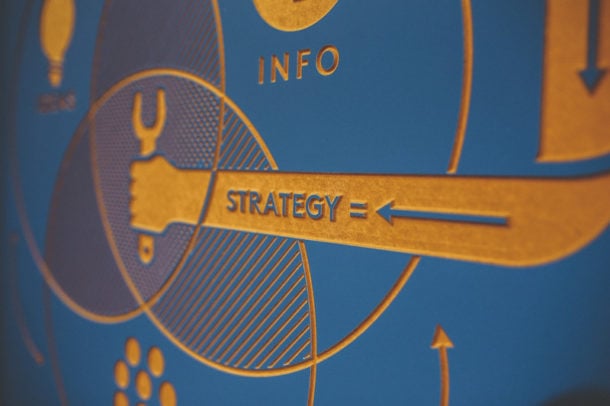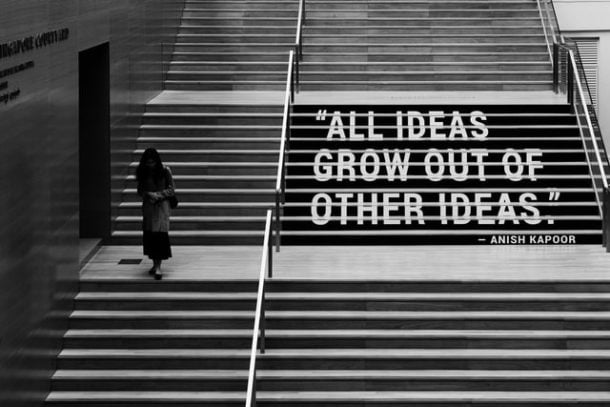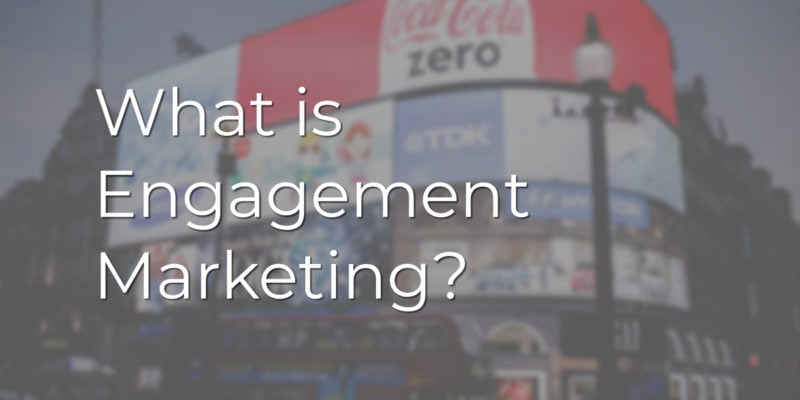Let’s be honest, most marketing today feels… well, forced. It’s like that pushy salesperson at the mall – nobody wants that. Your customers can smell inauthenticity a mile away, and honestly, who can blame them? They’re bombarded with ads every second of the day.
But what if there was a way to break through the noise? To actually connect with your audience and build a relationship that goes beyond just a single sale?
That’s where engagement marketing comes in. It’s about ditching the old-school “buy now” tactics and having real conversations with your customers.
“The best marketing doesn’t feel like marketing.” – Tom Fishburne, Founder of Marketoonist.
Think of it like this: instead of shouting at your audience, you’re inviting them to a party. You’re offering them valuable information, listening to their feedback, and showing them that you genuinely care about their needs and wants.
Sound good? Keep reading to learn more about how engagement marketing can revolutionize the way you connect with your audience.

Why This Matters to You
You’re not just reading this out of curiosity, right? Maybe you’re a…
- Small business owner struggling to stand out in a crowded market.
- Marketing professional searching for a more effective way to reach your target audience.
- Entrepreneur looking to build a loyal following for your brand.
Whoever you are, you’re likely tired of wasting time and money on marketing tactics that just aren’t working. You want results, and you want them now. Engagement marketing might just be the answer you’ve been looking for.
Ready to dive deeper? Let’s define what engagement marketing really is and why it’s so powerful. Just let me know when you’re ready for the next section!
What is Engagement Marketing?
Let’s ditch the jargon and talk plain English. At its core, engagement marketing is about treating your customers like people, not just numbers on a spreadsheet. It’s about building genuine connections and turning them into raving fans who can’t wait to tell their friends about you.
Also known as:
- Experiential marketing
- Event marketing
- On-ground marketing
- Live marketing
- Participation marketing
- Loyalty Marketing
- or Special events
“Content builds relationships. Relationships are built on trust. Trust drives revenue.” – Andrew Davis
Think of it like dating – you wouldn’t propose on the first date, right? The same goes for your customers. Instead of bombarding them with sales pitches, focus on getting to know them, understanding their pain points, and offering solutions that genuinely help them.
How It Works (Without the Fluff)
Engagement marketing isn’t rocket science, but it does require a shift in mindset. Here’s how it works:
- Listen: Pay attention to what your audience is saying on social media, in online forums, and through direct feedback. What are their concerns? What do they love about your brand?
- Interact: Respond to comments, ask questions, and start conversations. Be authentic and show that you care.
- Provide Value: Share helpful content, answer questions, and offer solutions. Don’t just talk about yourself – focus on how you can help them.
- Build Relationships: Over time, these interactions will foster trust and loyalty. Your audience will see you as a partner, not just another company trying to sell them something.
The Old Way vs. The Engagement Way
Think about it: would you rather be bombarded with ads, or would you prefer to have a meaningful conversation with a brand that actually cares about you?
Engagement marketing isn’t just a trend – it’s the future of how businesses connect with their customers.
| Old-School Marketing | Engagement Marketing |
|---|---|
| One-way communication (company talks, customer listens) | Two-way conversations (dialogue, feedback, collaboration) |
| Focus on sales and short-term gains | Focus on building long-term relationships |
| Interruptive tactics (ads, cold calls) | Valuable content and genuine interactions |
| Treats customers as a mass audience | Treats customers as individuals |
Tools for Engagement Marketing

Don’t worry, you don’t need to reinvent the wheel here. You’re probably already using many of the tools needed for engagement marketing. It’s more about how you use them.
- Social Media: This is your virtual hangout spot. Use it to share valuable content, start conversations, and respond to comments and questions.
- Email Marketing: This isn’t about spammy sales blasts. Use email to share personalized content, offer exclusive deals to loyal customers, and gather feedback.
- Content Marketing: Create blog posts, videos, or podcasts that answer your audience’s questions and address their pain points.
- Live Events and Webinars: Host virtual or in-person events to connect with your audience on a deeper level. Q&A sessions and workshops can be great for engagement.
- Community Building: Create a Facebook group, online forum, or Slack channel where your customers can connect, ask questions, and share their experiences.
- Customer Feedback Tools: Use surveys, polls, and feedback forms to gather valuable insights and show your customers that you value their opinions.

Why Emotional Intelligence
All the tools in the world won’t help if you don’t have the right approach. Engagement marketing requires emotional intelligence – the ability to understand and connect with your audience on a human level.
Here’s what that looks like in action:
- Active listening: Pay attention to what your customers are saying, both verbally and non-verbally.
- Empathy: Put yourself in their shoes and understand their emotions and needs.
- Authenticity: Be genuine and transparent in your communication.
- Patience: Building relationships takes time. Don’t expect instant results.
Remember, you’re not just trying to sell something – you’re building a lasting connection.
The Goal: More Than Just Likes and Shares

Sure, likes, shares, and comments are nice, but engagement marketing aims for something deeper. It’s about fostering a loyal community that:
- Trusts your brand: They believe in what you’re doing and feel confident in your products or services.
- Chooses you over competitors: They’re not just one-time buyers, they’re repeat customers who actively choose your brand over others.
- Becomes your advocate: They love your brand so much that they can’t help but share it with their friends, family, and followers.
- Provides valuable feedback: They’re invested in your success and want to help you improve.
Think of it like building a team – you want players who are committed, passionate, and willing to go the extra mile for the team’s success. That’s what engagement marketing campaign can do for your business.
How to Measure Your Engagement Success (Without the Headache)

Don’t worry, you don’t need a Ph.D. in statistics to track your progress. Here are some key metrics to keep an eye on:
- Conversion Rate: Are people taking the desired action (signing up for your email list, making a purchase) after interacting with your content or campaigns?
- Customer Lifetime Value: How much revenue do you generate from a customer over their entire relationship with your brand?
- Social Media Engagement: Are people liking, commenting, and sharing your posts? Are they joining your online community?
- Customer Satisfaction: Are your customers happy with their experience? Are they leaving positive reviews or recommending you to others? Understand your customer journey.
- Brand Sentiment: How are people talking about your brand online? Are they using positive or negative language?
Remember, engagement marketing is a marathon, not a sprint. Track your progress over time and adjust your strategy as needed.
Myths & How to Overcome Challenges in Engagement Marketing

Let’s be real, engagement marketing isn’t always a walk in the park. There are some common misconceptions and challenges that can trip you up. But don’t worry, we’re here to debunk those myths and offer some practical solutions.
“90% trust peers on social networks (even strangers); only 15–18% trust brands.” – Danny Brown
Myth #1: “Engagement Marketing is Just for Big Brands”
False! Engagement marketing is for anyone who wants to build stronger relationships with their customers. In fact, small businesses often have an advantage because they can be more nimble and personal in their interactions.
Myth #2: “It’s Too Time-Consuming”
True, engagement marketing does require an investment of time and resources. But think of it like this: you’re building a valuable asset – a loyal community that will support your brand for years to come. Plus, there are tools and strategies to help you streamline the process and make the most of your time.
Myth #3: “It’s All About Social Media”
While social media is a powerful tool for engagement, it’s not the only one. Email marketing, content marketing, events, and community building are all important pieces of the puzzle.
Challenge #1: Measuring ROI
Engagement marketing isn’t always as easy to measure as traditional advertising. But that doesn’t mean you can’t track your progress. Focus on metrics like customer lifetime value, conversion rates, and brand sentiment.
Challenge #2: Staying Consistent
Engagement marketing is a long-term game. It’s important to create a consistent schedule for posting content, responding to comments, and interacting with your audience.
Challenge #3: Avoiding Salesiness
Remember, engagement marketing is about building relationships, not just making sales. Focus on providing value and helping your customers, not just pushing your products or services.
The Action Plan: Your Engagement Marketing Strategies 
Ready to get started? Here’s a simple plan to put engagement marketing into action:
- Identify Your Target Audience: Who are you trying to reach? What are their interests, pain points, and values?
- Choose Your Channels: Where does your audience hang out online? Focus your efforts on the platforms where they’re most active.
- Create a Content Calendar: Plan out your content in advance so you can stay consistent and provide value on a regular basis.
- Engage with Your Audience: Respond to comments, ask questions, and start conversations. Be authentic and show that you care.
- Track Your Progress: Monitor your key metrics and adjust your strategy as needed.
Remember, engagement marketing is an ongoing process. It takes time, effort, and a willingness to experiment and learn. But the rewards – customer loyalty, increased brand awareness, and a thriving community – are well worth it.

Your Engagement Marketing Campaign Playbook: Key Takeaways and Next Steps
Let’s recap what we’ve learned about engagement marketing:
- It’s about building relationships: Forget about one-time sales, focus on fostering genuine connections with your audience.
- It’s a two-way street: Listen to your customers, respond to their feedback, and collaborate with them to create a better experience.
- It’s more than social media: Utilize a variety of channels and tactics to engage your audience, including email, content marketing, events, and community building.
- It’s measurable: Track your progress using metrics like customer lifetime value, conversion rates, and brand sentiment.
- It’s an ongoing process: Stay consistent, experiment, and never stop learning about your customers.
Your Engagement Marketing Checklist
Ready to take the next step? Here are a few actionable tips to get you started:
-
Craft a Compelling Brand Story: What makes your brand unique? Why should people care? Share your story in a way that resonates with your audience.
-
Create Valuable Content: Don’t just talk about your products or services. Share helpful tips, industry insights, create ebooks or flipbooks and entertaining stories that your audience will love.
-
Get Personal: Address your audience by name, respond to their comments individually, and tailor your content to their interests and needs.
-
Encourage Participation: Ask questions, run contests, and invite your audience to share their thoughts and experiences.
-
Measure and Analyze: Track your results and use the data to refine your strategy and make better decisions.
The Bottom Line
Engagement marketing isn’t just a trend – it’s a fundamental shift in the way businesses connect with their customers. By focusing on building relationships, providing value, and fostering a sense of community, you can create a loyal following that will support your brand for years to come.
